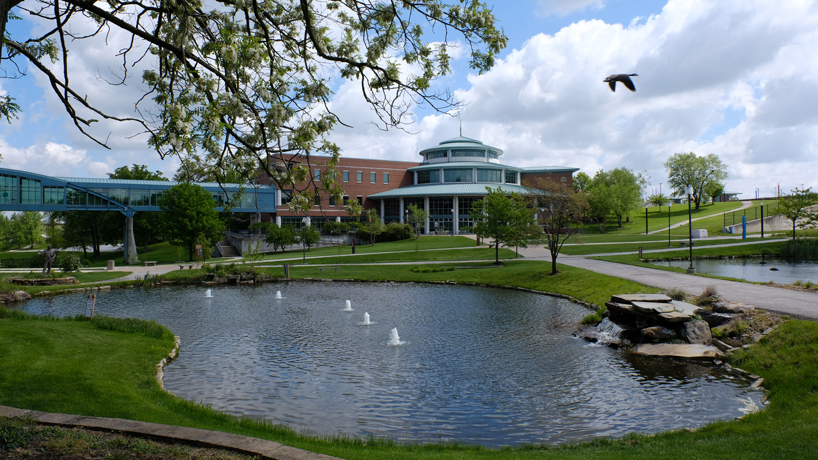
An economic impact study conducted by nationally recognized consulting firm Tripp Umbach found that the University of Missouri–St. Louis contributed more than $429 million to Missouri’s economy. (Photo by August Jennewein)
The University of Missouri–St. Louis contributed more than $429 million to Missouri’s economy while supporting 5,485 full-time and part-time jobs, both direct and indirect, throughout the state, according to an economic impact report released last Thursday.
“This report highlights the important role UMSL plays in our state, particularly in the St. Louis region, as a driver of economic growth and development,” said Chris Spilling, vice chancellor for research and economic and community development. “The university’s economic impact has increased nearly 20 percent since a similar study conducted four years ago. It still represents only a fraction of what the UMSL community contributes to the state’s and region’s economic health and social wellbeing when combined with the work being done by our legions of alumni living and working throughout Missouri.”
The report, completed by nationally recognized consulting firm Tripp Umbach, found that the University of Missouri System as a whole had a $6.5 billion statewide economic impact in Fiscal Year 2021.
“Each of our four universities in Columbia, Kansas City, Rolla and St. Louis have provided teaching, research, outreach and economic development excellence to Missourians for more than two centuries,” UM President Mun Choi said. “We are committed to enhancing the overall economic vitality of the state, and this study shows the University of Missouri System continues to deliver on its mission to the betterment of Missouri.”
The study measured the economic value generated by the UM System’s research, operations, service and expenditures throughout the state of Missouri between July 1, 2020, to June 30, 2021. The impact analysis measured effects throughout the state and each of its four universities as well as MU Extension, academic medicine, research, athletics and alumni.
- $6.5 billion generated in economic impact by the UM System and its four universities, MU Extension, athletics and academic medicine
- More than 69,000 direct and indirect jobs, both full-time and part-time
- Approximately $366.5 million generated in state and local taxes
- $1.5 billion economic impact generated by the UM System research enterprise
- $2.4 billion generated in economic impact by UM System academic medicine
- $376.8 million generated in economic impact by athletics at the four UM universities
“For every state dollar invested in the University of Missouri System, Missouri taxpayers saw $15.49 in economic benefits in 2021,” said Darryl Chatman, chair of University of Missouri Board of Curators. “Investing in our universities not only continues to produce tomorrow’s leaders, educate our workforce and engage in innovative research to solve some of our biggest challenges, it’s also a good investment in our state’s economy.”
Tripp Umbach staff used primary data collected from the UM System, including capital expenditures, operational expenditures, employee figures, payroll and benefits, taxes paid to local and state governments, visitation numbers for campus events, student figures, and proportions of students who live on and off campus to accurately measure their spending in the local area. Values in the report were generated by direct, indirect and induced operational spending, capital spending, payroll, visitor spending and student spending throughout Missouri.
“The impact our universities and statewide programs have on Missourians goes beyond economics,” said Marshall Stewart, chief engagement officer for UM System and vice chancellor for Extension and Engagement at MU Extension. “Our universities and their programs have a presence in every single Missouri county, serving the entire state to increase economic opportunity, increase educational access and promote the health and wellbeing of all Missourians.”














